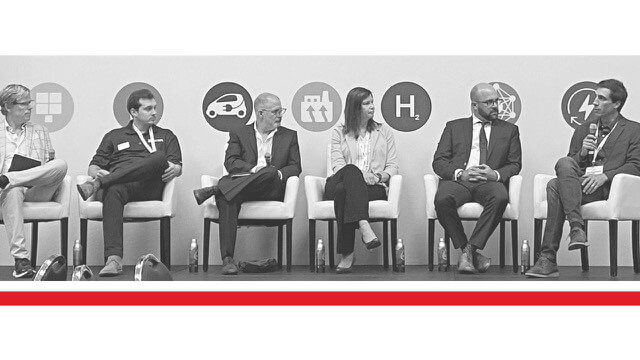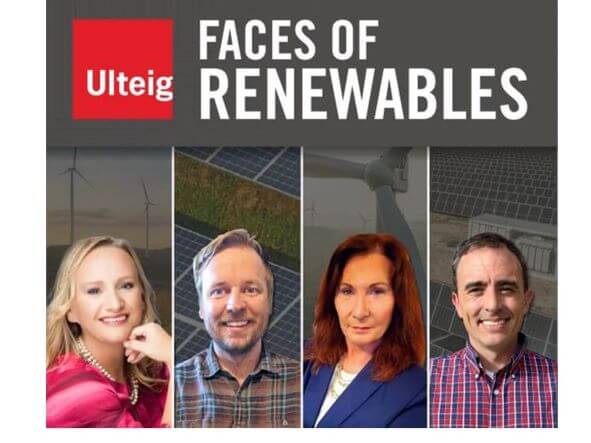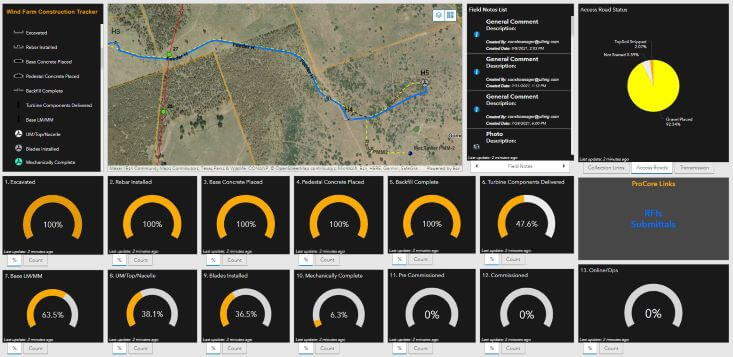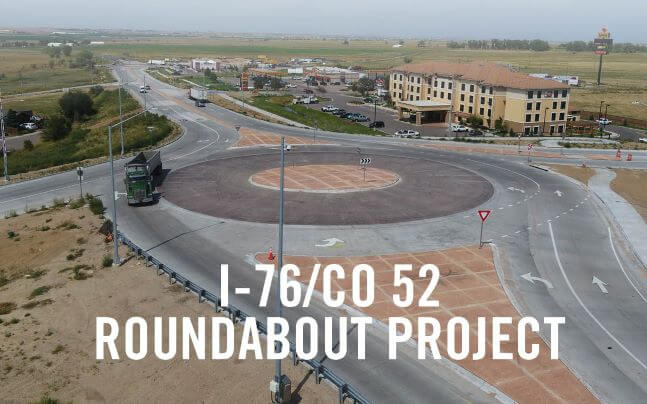Today, clean energy is one of the most prominent topics that graces the news, legislation and roundtable conversation. The recent Inflation Reduction Act (IRA) has increased incentives for Americans to integrate cleaner energy and electrified technology into their daily lives, but this shift in consumerism comes with challenges of modernizing the grid and financing and developing these projects to keep up with demand and changing weather patterns.
Sharing Knowledge at RE+
The Ulteig Renewables team felt the industry buzz in full force while attending the first-ever RE+ event in Anaheim, CA (formerly Solar Power International) in September of this year.
While the general industry chatter at RE+ seemed to be “full-steam ahead” in favor of recent clean energy incentives, it’s clear that momentum in development won’t come without posing new and escalated challenges that must be solved for continued progress in carbon reduction. One of these challenges presented to engineers, developers and operators across the industry is resiliency during increasing extreme weather events and climate change. Six panelists, including Chad Crabtree, Renewables Market Director at Ulteig, discussed the challenge of resiliency within extreme weather events during the session titled, Winter Is Coming: Are Developers Ready?
The multi-disciplinary panel included perspectives representing various stakeholder groups typically involved in clean energy projects such as developers, utilities, insurance, engineering and emerging technology. Panelists included:
- Moderator: Casey Marshall – VP, Business Development, Clean Energy Associates
- Speaker: James Papazis – Claims and Legal Counsel, GCube Insurance Services, Inc
- Speaker: Kevin Christy – Head of Innovation & Operational Excellence, Americas, Lightsource BP
- Speaker: Chad Crabtree – Market Director – Renewables, Ulteig
- Speaker: Weston P. Dengler – Analyst, Research and Industry Strategy, SEPA
- Speaker: Stephanie Buway – Director of Development, Central Region, EDPR
The panel focused on multiple aspects regarding the development of renewables. The first was the advent of the current “land rush,” where optimized interconnection locations are limited, but in high demand among project developers. As available locations become riskier, the need to plan for resilience and mitigate risk up-front increases, sometimes creating additional financing challenges.
Another point of discussion during the panel was centered around balancing project economics and efficient clean energy production in the face of weather-related challenges. How can we collaboratively and effectively work to minimize asset damages and down-time, while maximizing reliable clean energy generation that can withstand harsher environments?
Resiliency: How can we design for it?
Resilience can be defined in many ways, but the RE+ panel agreed upon a definition that relates broadly to the industry during the discussion: it is the ability to withstand and recover from attacks and/or incidents such as extreme weather events. Resiliency is valued differently by different Distributed Energy Resource (DER) stakeholders, but it remains crucial across the board for improving safety and energy reliability within our communities.
During the discussion, Chad Crabtree reiterated the importance of updated design features, technology and standards, including code, but only with the proper supplementation of collaboration: “Code is changing; but that’s not enough,” said Crabtree. “Bringing these stakeholders together to really identify how to plan out a project for proper resiliencies is the key.”
While in some instances prudent code updates have been made to keep pace with increasing patterns of extreme weather – like new NOAA Atlas maps depicting rain intensities for drainage design – not all code change proposals have net positive benefits for the industry. Earlier this year the Federal Emergency Management Agency (FEMA) proposed S76-22, a code change currently under consideration for the 2024 International Building Code. S76-22 erroneously claims that higher structural design loads for all “public utility facilities providing power generation” will lead to greater grid reliability and fewer outages. However, the proponents failed to engage grid reliability experts such as NERC/FERC in their proposal and have seemingly misunderstood the distributed nature of renewable energy facilities. The flaws in their approach to change the code in this instance are many, with a net effect that would slow renewable generation deployment overall.
Crabtree also stated how, while updated codes and specs are necessary for long-term resilience, procuring the right equipment is paramount to keep up with changing weather patterns.
“Not all equipment is equal. Some equipment is going to do better in certain conditions like extreme heat. Understanding that and choosing the right equipment [is important],” said Crabtree.
Key Takeaways
Among the discussion between panelists and questions from the audience, there were several main themes and takeaways that came through loud and clear for project stakeholders to consider as the industry charges forward towards a sustainable future:
- Consider all stakeholders. Code may be keeping pace with changing weather patterns to some extent, but there’s more than just the code that needs to be on the same page – it’s stakeholders, too. Clean energy is a very competitive market right now, but no one can make progress alone. We will all need to leverage strategic partnerships in the race towards a carbon-neutral future.
- Plan before you purchase. Not only must developers consider site prospecting, land value and constraints, insurance protection and weather trends, they also have to take into consideration the market, financials and the project’s long-term trajectory. It is absolutely vital for developers to complete proper due diligence in the early-stage prospecting and planning phases of a project to minimize risk and inform business decisions moving forward.
- Design for the future. Weather patterns are going to continue to change. Engineers need to evolve their design to reach client goals and help developers justify investments now, rather than spend money on a bare-bones design that isn’t optimized for the future. Modern design that is future-focused should be relevant and specific to the geographical presence of the infrastructure and may include robust technology evaluation and additional design considerations including weather sensors, hail damage mitigation or wildfire land barriers in high-risk areas such as California.
- Learn from the past. Weather event and plant performance data collection and sharing is helping stakeholders take action on lessons learned. In the pursuit of energy efficiency, data is king. We must look to similar mature industries such as oil and gas for additional lessons on efficient generation and framework-building. Collaborating across industries to share data and mutually benefit from past events will prove invaluable moving forward.
Through collaboration, there are so many opportunities and lessons to learn from the combined knowledge and expertise that exists in the industry. When the many involved stakeholders arrive at a project with different business goals and levels of value for clean energy resilience, it’s crucial to discover and align strategies for mutual benefit.
Learn more about Ulteig’s Long-Term Planning Capabilities
Do you need engineers who embrace a long-term mindset and can help your business think forward five, ten or even 30 years ahead? With more than 75 years of experience in serving the energy industry, Ulteig engineers combine their expertise in multi-discipline engineering with innovative mindsets. This helps our clients anticipate future needs while addressing and mitigating issues that may have an immediate or near-term impact. Learn more about Ulteig’s RENEWABLES capabilities in every project stage.
You can also read more about Grid Resiliency and designing projects to account for major weather events in our Knowledge Center.




